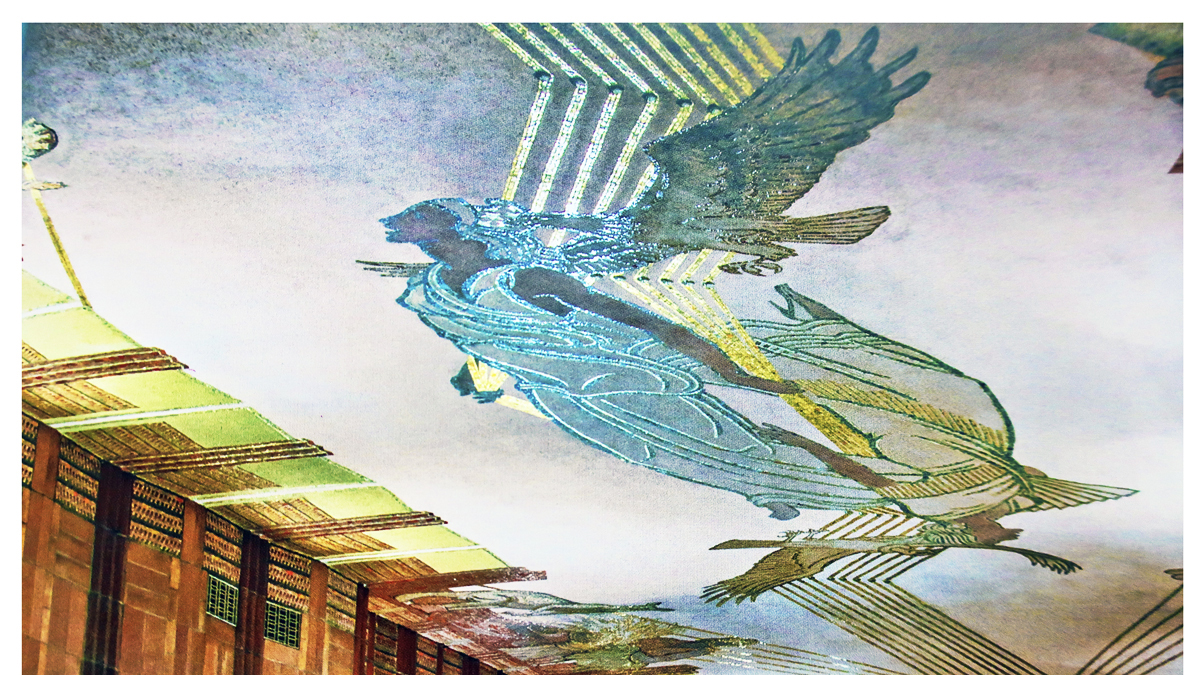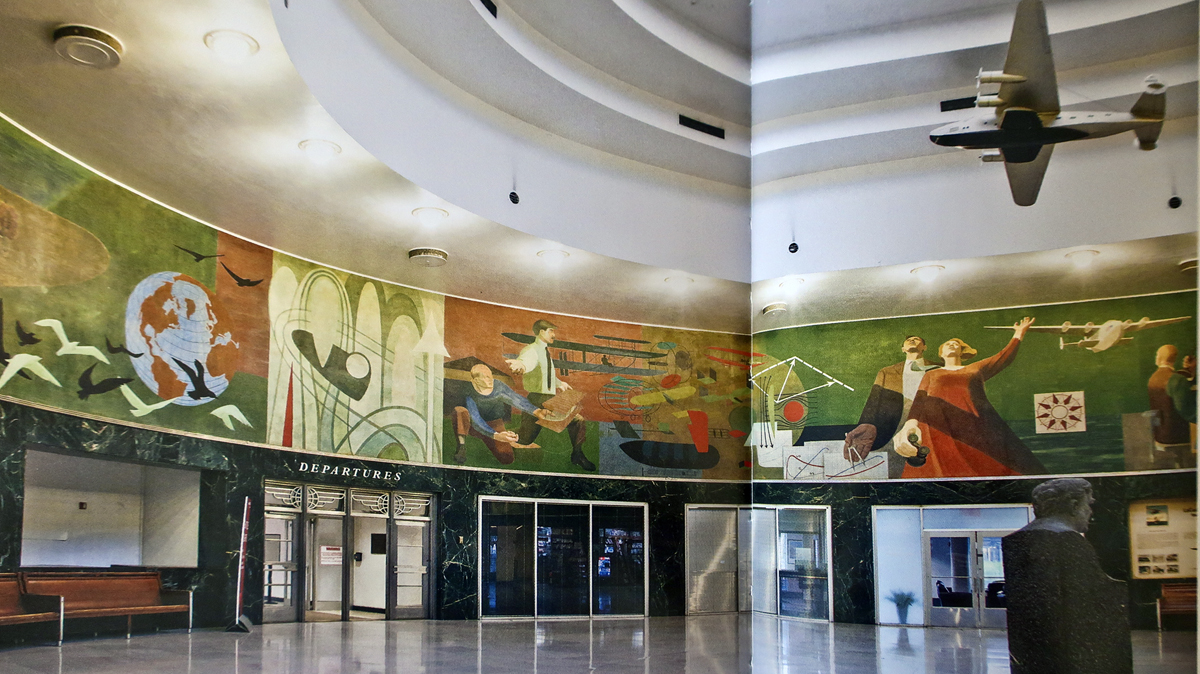
Back before office towers were just boxes of concrete, steel and glass, artisans in New York created grand lobbies filled with whimsy. The Big Apple’s theaters were showcases of art and even banks were gilded temples of finance.
You may have even seen a few of these showoff spaces, like the vast Grand Central Station with its constellations in a night sky painted across the ceiling, or the cathedral-like arches of the Metropolitan Museum of Art. But there are many beautiful hidden bites of the Big Apple that you can sample in a day before or after a cruise. Even a visit to a few makes for a fascinating free tour of the richness and artistic vision of the city’s past that even native New Yorkers may have never noticed.
Let’s have a look:

Our guidebook is the intriguing new Interior Landmarks, Treasures of New York, that encourages peeking behind those open doors on the sidewalks of New York. Authors Judith Gura and Kate Wood prowled the 120 remarkable interiors listed as protected by the New York Landmarks Law. They tell fascinating stories of 46 of them that are matched with hundreds of evocative photos by Larry Lederman.
All the interiors are either accessible to the public or open by invitation. Some are well known, like Radio City Music Hall, and the dazzlingly Art Deco lobbies of the Empire State Building. But some are banks and office lobbies you might not otherwise think to enter unless you seek them out. But it’s well worth the effort.

1) The Dime Savings Bank, 9 DeKalb Avenue, Brooklyn
There was a time when 10 cents was a lot of money. It was enough to open an account at this bank founded in 1859 and those little accounts had grown so much half a century later that the bank could splurge on a classical temple. Its gilded columns are inlaid with enormous medallions featuring the designs from U.S. dimes and the teller stations are made of marble. These days, you can’t open an account –let alone buy a candy bar–with a dime, but you can have a free look at this storied space that’s now used as a conference center.

2) Pierpont Morgan Library, 225 Madison Avenue
This Renaissance Revival building with its frescoed ceilings and over-the-top grandeur was designed by renowned architects McKim, Mead and White in 1906 for the reigning magnate of the day, J. Pierpont Morgan. The uber-rich railroad, finance and steel baron ordered four marble and lapis lazuli halls to hold his massive collection of books and manuscripts. The lunettes in their domed ceilings were inspired by Raphael’s ceilings in the Vatican. Morgan’s study features silk-covered walls and a ceiling carved from Italian woods. Today, the museum is open to the public and well worth an eye-popping visit.

3) New York Public Library, 476 Fifth Avenue
You mean I came all the way to New York to go to the library? Well, it’s a lot more impressive than the study halls you remember from when you were a kid. You may have walked by the regal set of lions that flank the entrance to the vast columned building, but never been tempted to stroll inside. The main branch of the library was built on a bequest at 42nd Street and Fifth and became the largest marble structure built in America. The vaulted main hall is 70 feet long, 44 feet wide and 34 feet high and masterfully carved in Beaux-Arts style. The many grand halls and reading rooms are from a tradition that going to a library was meant to inspire as well as inform and they’re fresh from recent renovations.

4) Loew’s Paradise Theater, 2403 Grand Concourse, Bronx
You might as well be in Imperial Rome in this theater that was built in the heady Roaring Twenties and opened just before the stock market crash of 1929. This ornate showplace was built as a Wonder Theater for Loews, which at the time was an entertainment phenomenon: a chain of 144 theaters for vaudeville and movies. The marble-floored theater that seats 4,000 is surrounded with gilded cartouches; classical statuary, urns and archways and rococo-style murals. It was designed to suggest a courtyard of a grand palazzo and its deep blue ceiling with indirect lighting creates the impression of being outdoors. You’ll never forget a walk up the ultra-ornate grand staircase with its lace-like railings and cherubs overhead to the balcony. Restored in 2005, it’s today used as an entertainment venue.

5) Marine Air Terminal (Terminal A), LaGuardia Airport
Yes, we’ve all experienced the cramped and dreary terminals at LGA that are none-too-soon going to be demolished and replaced by a new terminal complex. But there’s a part of the airport that will be kept as a reminder of the days when air travel was less stressful and more adventurous. The Art Deco interiors of the original international terminal were built in in 1939 for a then-unheard of cost of $40-million. It was inaugurated in March, 1940 when a Pan Am Boeing 314 seaplane nicknamed the Yankee Clipper made its first transatlantic flight to Lisbon, carrying nine passengers and a 10-person crew. The terminal with its ceiling murals celebrates the wonders of the propeller age and its stainless steel signage has been restored and is still used as the waiting room for Delta and Jet Blue shuttle flights to Boston and Washington.

6) AT&T Long Distance Building, 32 Avenue of the Americas
There was a time when contacting someone in another city the same day was really, really expensive. It made American Telephone and Telegraph Co. very, very rich. And is headquarters kept expanding until in 1932 it ordered up a fabulous lobby in Art Deco French Moderne style. The ceilings are decorated with allegories by prominent artist of the day Hildreth Meiere, of four continents linked by golden telephone lines. That glittering angel in the center is, of course, there as reminder of the benevolent company that makes it all possible.
There are dozens more treasures included in the 224-page Interior Landmarks, from the Apollo Theater to The Woolworth Building and not all of them are from the Gilded Age. They include modern classics like the Seagram Building and Eero Saarinen’s spaceport- feeling TWA Flight Center at Kennedy Airport.
Just reading about them and viewing the evocative photos in the book is a trip in itself.
Interior Landmarks, Treasures of New York by Judith Gura and Kate Wood with principal photography by Larry Lederman is published by The Monacelli Press and priced at $30 U.S./$40 Canadian. www.monacellipress.com





